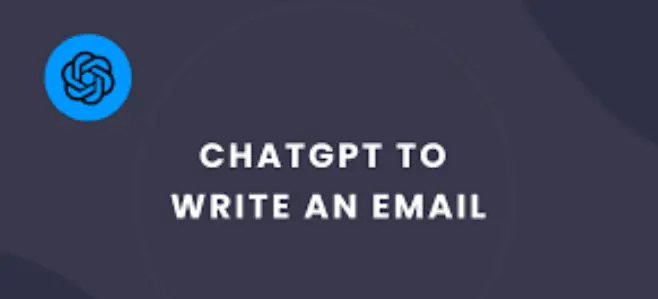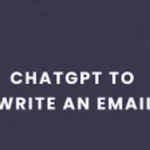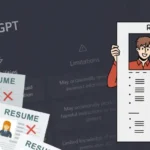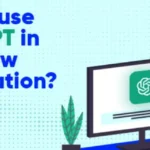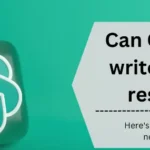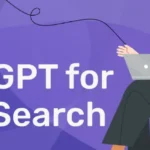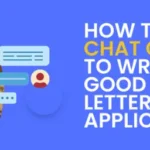If you spend a lot of time writing emails to clients and your team, you know it can be a big part of your week. Some of these emails are the same or similar each time, which can get repetitive.
But you can save time and improve your productivity using AI tools like ChatGPT to help you. ChatGPT uses its AI to write some great emails for you. You have to keep in mind that you write the prompts in proper detail.
If you’re not sure about using AI for writing your emails, this guide proves helpful for you. In this article, we’ll explain how to use ChatGPT to write emails without needing to know a lot about tech. In the meantime, you can also learn to create a resume using ChatGPT or create an efficient cover letter using ChatGPT.
Table of Contents
Why To Use AI Tools Like ChatGPT For Writing Emails?

AI-powered tools like ChatGPT for writing emails have several advantages for users. Here are some of them:
Using ChatGPT to write emails saves you time by quickly creating drafts that you can personalize. This is especially handy for formal emails and coming up with subject lines.
ChatGPT can also help users to take the stress out of finding the right words, which makes your emails sound professional and confident.
ChatGPT can enhance your email writing skills by offering new ideas, creating templates, and improving your overall writing style. You can always tweak the suggestions to maintain your personal touch.
That’s all; ChatGPT simplifies the email writing process, making it faster, less stressful, and more effective. There are more benefits to using ChatGPT for writing emails, such as enhancing your email writing productivity.
How To Use ChatGPT To Writing Emails
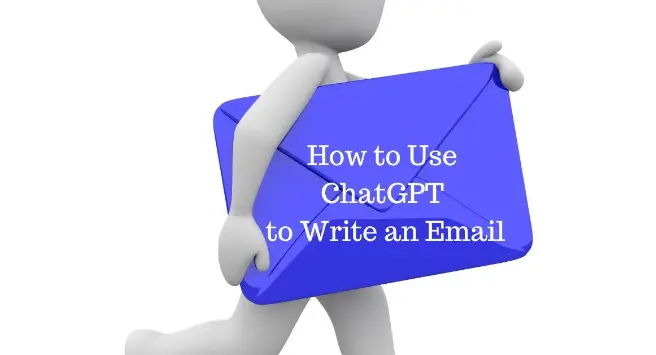
Step 1: Create Your Detailed Prompt
If you want to get the best output of ChatGPT for writing emails, be specific in your requests. Consider these things whenever you create your prompt:
- What type of email are you writing, like a reminder or a certification application?
- Your preferred tone, whether casual or formal.
- The length you’re aiming for in terms of words or characters.
- Who is your audience, like a client or a virtual assistant?
- Details about yourself that are relevant, such as your specialization.
Also, give examples of past emails so ChatGPT understands your style. This helps it mimic your tone and format. By providing clear instructions and examples, you’ll get tailored responses that suit your needs.
Step 2: Asking For Revisions For Better Results
Once you’ve written your initial response, some changes need to be made. That’s alright! You can ask for revisions by giving more details or requesting a rewrite with specific instructions in mind.
Step 3: Edit Your Email Copy
Once you’ve taught ChatGPT everything you want, you can start editing the text to make it just right. You don’t have to give it a whole new prompt; instead, you can make small changes here and there.
This can be quicker than starting from scratch and gives you a chance to add your personal touch. You can also swap out words you don’t like for the ones you prefer.
Step 4: Generate Best Subject Lines Using ChatGPT
Generating compelling subject lines is crucial for email success, particularly in sales and marketing efforts. They directly impact whether your recipients open and engage with your message.
ChatGPT can provide multiple subject line options for you to choose from, allowing you to tailor and select the most effective one to communicate your message effectively. Let me know if you need further clarification or assistance!
What Types Of Emails You Can Write Using ChatGPT?

Are you searching for ways to use ChatGPT to write emails yet? Let’s look at several specific prompt examples of what ChatGPT can do for you to write an email.
- Cold Outreach Email:
Prompt Example: You’re a health coach with 5 years of experience. Write a short email (about 150 words) to a potential client introducing your coaching services.
- Follow-Up Email:
Prompt Example: A client hasn’t paid their invoice due a week ago. Please write a brief, professional email (maximum 100 words) reminding them to settle the payment.
- Onboarding Email:
Prompt Example: After a discovery session, a new client has signed up for your “6 Weeks to a New You” coaching package. Welcome them to the program and provide them with the link to book sessions and make payments.
- Firing a Client Email:
Prompt Example: You have a client who has repeatedly missed coaching sessions without notice. Please write a short, professional email informing them that you need to terminate your coaching relationship due to their consistent absence.
- Newsletter Announcement Email:
Prompt Example: You’re a nutritionist launching a new series of healthy recipe newsletters. Write a captivating email (around 200 words) to your subscribers, introducing the new series and inviting them to sign up for weekly recipe inspiration.
- Testimonial Request Email:
Prompt Example: You’ve recently completed a successful coaching program with a client who expressed satisfaction with your services. Write a polite email (maximum 120 words) requesting a testimonial from them to feature on your website or social media platforms.
The Best ChatGPT Prompts For Writing Emails

Want to improve your emails? Use AI chatbots like ChatGPT. They can help you in four ways. For instance, you can ask for tips on improving emails. Just ask, and they’ll assist you in crafting better messages.
Here are some of the best ChatGPT Prompts to Enhance your email communication with ChatGPT:
- Crafting tailored emails effortlessly: Start with a request like “Create a compelling email promoting [product], emphasizing [key features] and announcing a [discount] valid until [date]. Then, refine with “Adjust the email to emphasize [specific feature].”
- Perfecting your grammar and spelling: Input your message and prompt, “Correct the spelling and grammar in this email.”
- Generating thoughtful replies: Paste the received email and instruct, “Compose a professional response declining the meeting due to a scheduling conflict, proposing a reschedule for Oct. 4.”
- Condensing your message: Submit your draft and ask, “Condense this email into a single paragraph, emphasizing the top [3 points].”
- Nailing the right tone: Share your draft and prompt, “Polish this email to maintain a professional and constructive tone.”
- Streamlining follow-ups: Input an existing email and request, “Write a concise follow-up email regarding [topic], ensuring clarity and brevity.”
- Generating meeting requests: Begin with “Compose an email requesting a meeting to discuss [topic] with [recipient], proposing available time slots.”
- Tailoring sales pitches: Provide product details and specify, “Craft an email pitching [product] to [the audience], highlighting its unique benefits and offering a special deal.”
That’s all. These prompts leverage ChatGPT’s capabilities to effortlessly refine, optimize, and personalize your email communication.
Best Practices For Email Writing Using ChatGPT
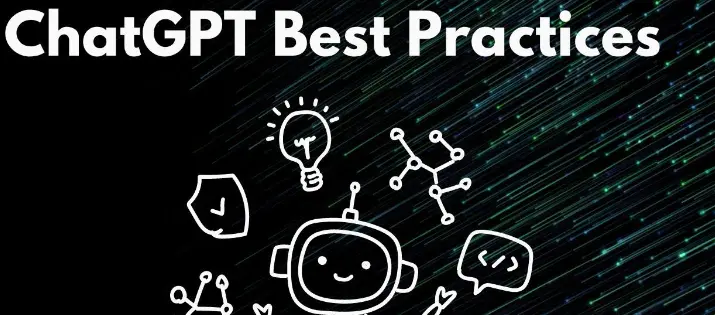
Now that you know the basics of using ChatGPT for email writing, here are some best practices to keep in mind:
Sure, here’s a simplified version:
When writing emails with ChatGPT, remember these tips:
- Use ChatGPT as a helper, not a professional: It’s great for making your emails better, but don’t totally depend on it too much. Put some effort into your message, too.
- Give detailed info: The more information you give to ChatGPT, the better it can help you and provide you with the best outputs. So, be clear whenever you write prompts.
- Pick the correct response: ChatGPT can suggest lots of replies as an output for your prompt. It’s your decision to choose the one that fits your style and tone the best.
- Check your email: Even though ChatGPT helps you with writing emails, it is still essential to read through and check for any mistakes.
- Watch for biases: Sometimes ChatGPT might have some biases because it learns from the information it’s given. It’s essential to be aware of this and check for unfair or wrong assumptions.
Overall Experience Of Using ChatGPT For Writing Emails
ChatGPT is an excellent AI tool for writing emails or other tasks. Using ChatGPT for writing emails can really boost your skills. With ChatGPT, you can create emails that are effective and interesting.
Whether you’re emailing a potential employer, checking in after applying for a job, or just saying thanks, ChatGPT can guide you in creating messages that leave a good impression.
As we used it for writing emails, it provides the best outputs, and It’s like having a helpful writing buddy by your side. Give it a chance and see for yourself how much it can improve your email game.
Frequently Asked Questions
Is ChatGPT perfect?
ChatGPT is good, but it can make mistakes sometimes. To be sure your emails are correct, it’s best to double-check them or use a tool like Grammarly.
Does ChatGPT copy from the internet?
No, ChatGPT doesn’t copy from the internet in real-time. It uses what it’s learned to come up with responses. But it’s always a good idea to fact-check and cite sources if needed.
Is ChatGPT free?
Yes, you can use GPT-3.5 for free. If you want a faster and more advanced version, GPT-4, it costs $20.

Ankush Thakur is a part of the core team of writers at AIAncestor. He is highly passionate about staying updated with the latest technological advancements. Ankush is pursuing a bachelor’s degree in Computer Application (BCA) and working with AIAncestor as a technical content writer.
